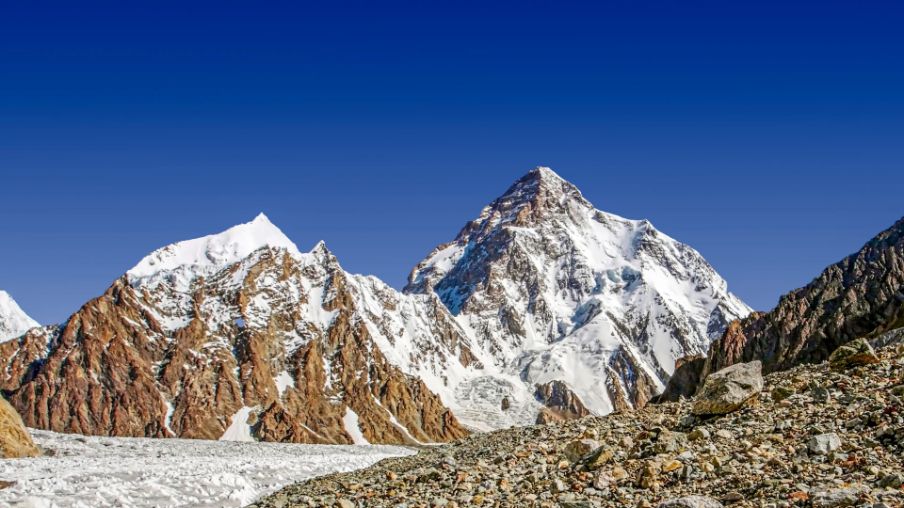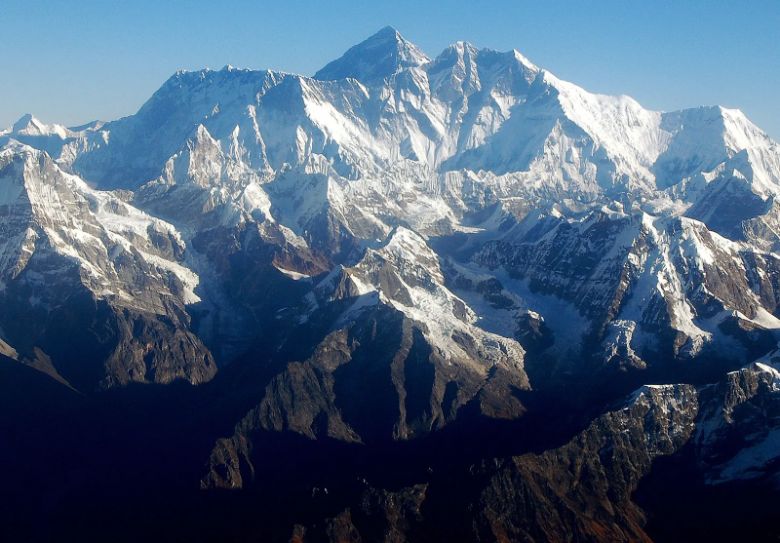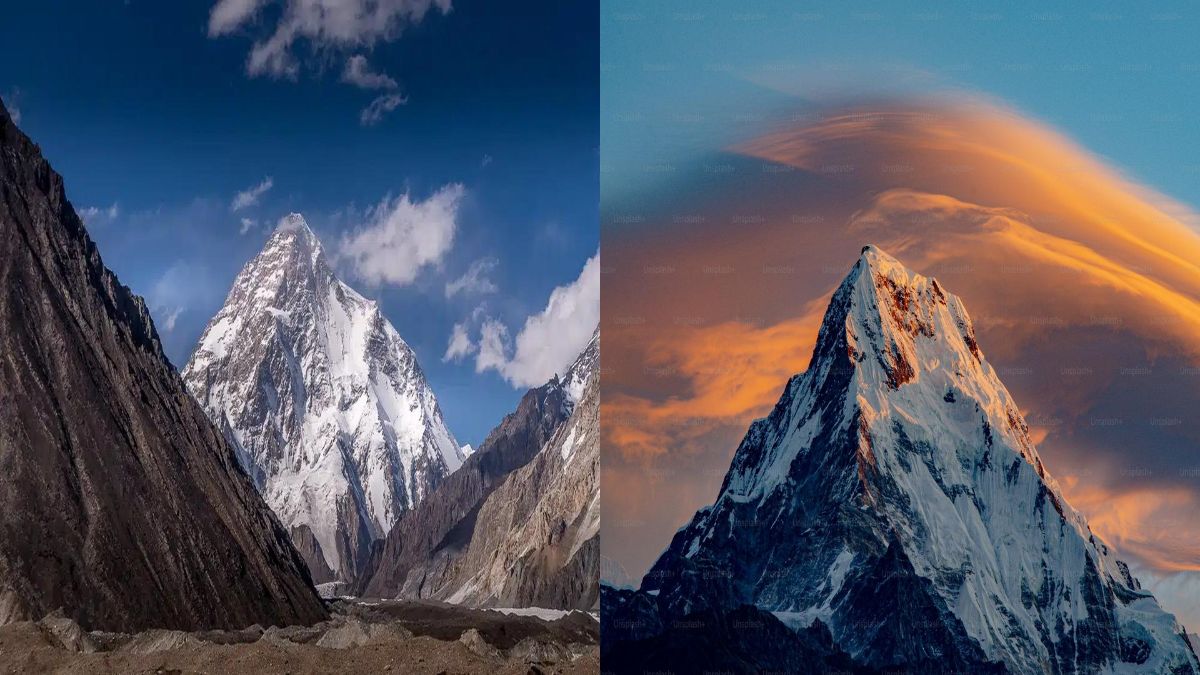K2 and Everest are two of the world’s most famous and awe-inspiring mountains, revered by adventurers and mountaineers alike. Everest, the tallest mountain on Earth, is a dream climb for many, while K2, the second-highest peak, is often called the ultimate challenge. Known as the “Savage Mountain,” K2 is infamous for its dangerous conditions, steep technical routes, and extreme weather, making it far more perilous than Everest. For those seeking a thrilling journey, a guided K2 Expedition is the perfect way to experience this iconic peak’s untamed beauty and formidable challenges.
Everest vs. K2: A Comparison of Geography and Elevation
Location and Mountain Ranges
K2 lies in the Karakoram Range, part of the greater Himalayas, and straddles the border between Pakistan and China. Rising majestically above the Baltoro Glacier, it is surrounded by dramatic landscapes and neighbouring peaks like Broad Peak and Gasherbrum. In contrast, Mount Everest is situated in the Himalayas on the border of Nepal and China, with the vast Tibetan Plateau as its backdrop.
Elevation Facts
At 8,849 meters (29,032 feet), Everest claims the title of the tallest mountain on Earth. K2 follows closely at 8,611 meters (28,251 feet). However, what K2 lacks in height, it more than makes up for in difficulty, with its sheer steepness and highly technical climbing routes giving it a reputation as one of the deadliest mountains in the world.
Why K2 is Harder to Climb: Technical Challenges and Dangerous Routes
Steep Slopes and Treacherous Routes
Climbing K2 is no ordinary feat. Routes like the Abruzzi Spur and the Bottleneck push climbers to their limits with steep, icy ridges and narrow passages. In comparison, while Everest’s South Col route is challenging, it is more gradual and often includes Sherpa support and fixed ropes.
Technical Climbing Skills Required
To scale K2, climbers need advanced ice climbing, crevasse navigation, and rock climbing skills. The mountain leaves no room for error, testing the physical and mental limits of anyone attempting to conquer it.

Extreme Weather: How K2’s Climate Makes it Deadlier
Unpredictable Storms and Winds
K2’s weather is notoriously unpredictable, with storms lasting days or weeks. Hurricane-force winds and whiteouts are common, making progress—and survival—a constant battle.
Sub-Zero Temperatures
Even during climbing seasons, temperatures on K2 can drop to an unbearable -60°C (-76°F). Climbers often face frostbite, hypothermia, and equipment failures due to the extreme cold.
Short Summit Weather Windows
While Everest offers broader climbing seasons (May and September), K2’s weather only provides a short summit window, typically in July or early August. This adds immense pressure on climbers to ascend and descend quickly, increasing the risks.
K2’s Lethal Reputation: Death Rates and Fatalities
High Fatality Rate
K2’s fatality rate is around 25%, meaning that one in four climbers does not make it back. Everest’s fatality rate is closer to 3%, thanks to better infrastructure, support systems, and easier access.
Causes of Fatalities on K2
Most deaths on K2 are due to avalanches, falls, altitude sickness, or sheer exhaustion during the descent. The Bottleneck, a narrow path near the summit with precarious ice overhangs, is particularly deadly and has claimed many lives.
Historical Expeditions: Tragedies and Triumphs on K2
K2’s First Ascent and Early Attempts
K2 was first climbed in 1954 by Italian climbers Lino Lacedelli and Achille Compagnoni via the Abruzzi Spur. This historic achievement marked the beginning of K2’s legendary status.
Notable Disasters
The 2008 K2 Tragedy is one of the darkest chapters in mountaineering history, with 11 climbers losing their lives due to avalanches and miscommunication. Events like this highlight the dangers and unpredictability of K2.
Legendary Climbers
World-famous climbers such as Reinhold Messner and Wanda Rutkiewicz have taken on K2, adding to its mystique. Their stories of triumph and resilience continue to inspire adventurers worldwide.

K2 vs. Everest: Raw Wilderness vs. Commercial Climbing
Everest’s Commercialized Experience
Everest has become a hub for commercial expeditions, with Sherpa-guided climbs, pre-laid ropes, and comfortable base camps, making it more accessible to a broader range of climbers.
K2’s Untouched Challenges
In stark contrast, K2 remains wild and largely untouched by commercial tourism. Its remote location, lack of infrastructure, and sheer difficulty mean only the most skilled and experienced climbers dare to attempt it
The Psychological and Physical Toll of Climbing K2
Altitude Sickness and Oxygen Deprivation
At extreme altitudes, oxygen levels drop drastically. Many climbers on K2 suffer from conditions like acute mountain sickness (AMS), cerebral oedema, or pulmonary oedema, which can be fatal without immediate treatment.
Mental Resilience Needed
K2 tests not only physical endurance but also mental strength. Climbers face constant threats of avalanches, extreme weather, and the haunting sight of others who have perished on the mountain. The psychological toll is immense, requiring extraordinary resilience.
Fascinating Facts About K2 and Everest
- K2’s Winter Ascent: K2 was the last eight-thousander to be summited in winter, achieved by a Nepalese team in January 2021.
- K2 is Deadlier: Over 6,000 climbers have summited Everest, but fewer than 400 have reached the top of K2, which is far deadlier.
- Unique Features: K2’s Bottleneck and Everest’s Hillary Step are iconic yet extremely challenging sections of their respective climbs.
For an in-depth look into K2’s legacy and formidable nature, explore K2 mountain facts, challenges, and history, highlighting why it stands apart as the ultimate mountaineering test.
Why K2 is Truly the Savage Mountain
The Mountain’s Cultural and Local Significance
Known locally as “Chogori,” meaning “King of Mountains,” K2 holds cultural and spiritual significance for the Balti people.
Environmental Challenges
The increasing impact of climate change on glaciers and the environment around K2 poses new risks for climbers and local ecosystems.
Conclusion
K2 has rightfully earned its title as the “Savage Mountain.” With its unforgiving weather, high fatality rates, and unmatched technical difficulty, it represents the ultimate challenge for climbers. While Everest attracts thousands of adventurers, K2 symbolises raw wilderness and pure mountaineering.
For those who dare to dream big, K2 is a testament to the resilience, skill, and courage required to conquer nature’s greatest challenges. Whether you’re a climber or an enthusiast, the Savage Mountain’s legacy is a powerful reminder of the spirit of adventure.

